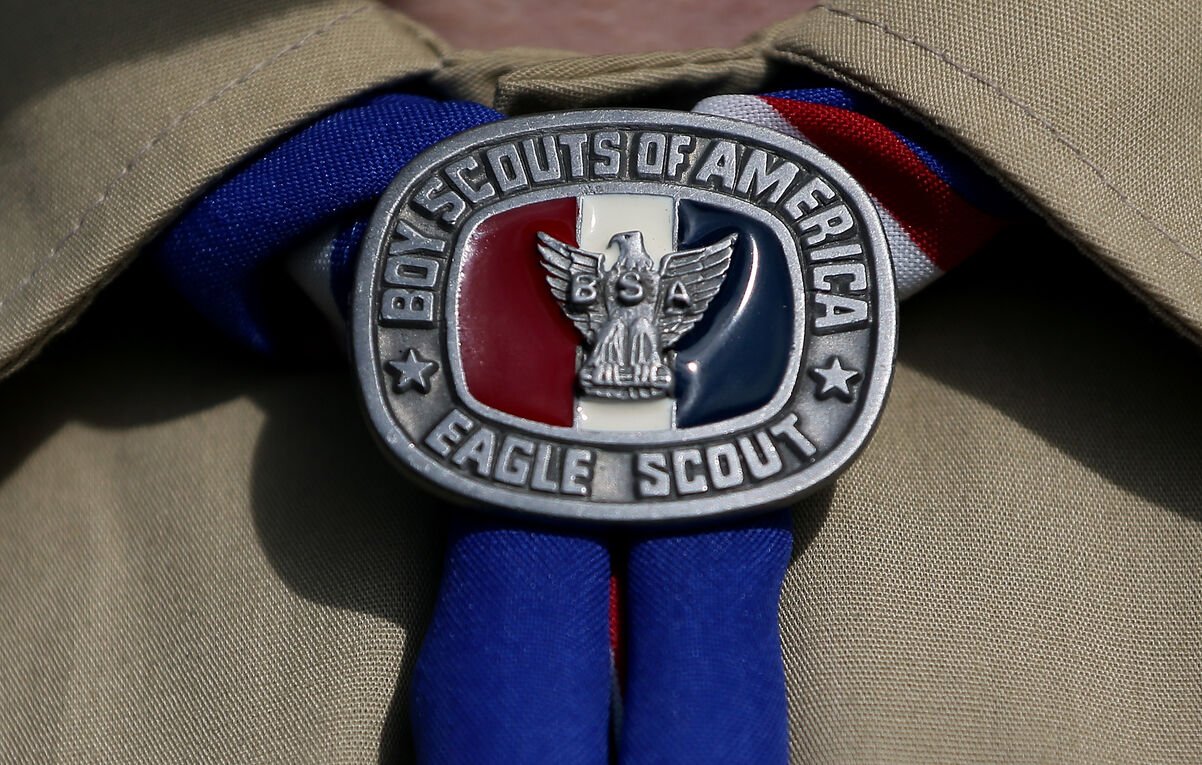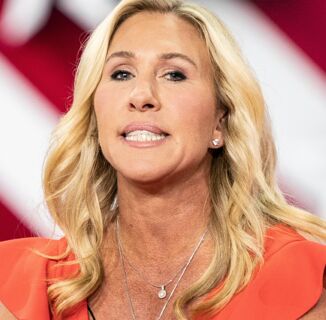The fate of LGBTQ youth hangs in the balance following the announcement that the Mormon Church plans to part ways with the Boy Scouts of America.
The Church of Jesus Christ of Latter-day Saints announced Wednesday it intends to start its own youth program in light of the BSA’s planned name change. As the national leadership development organization prepares to allow girls into its ranks, the 108-year-old group will now be known by the moniker “Scouts BSA.”
Mormon leaders did not state whether the decision was influenced by the BSA’s embrace of gender neutrality.
“As a global church with millions of children and youth, we need to address diverse needs and fortify all children and youth with gospel-centered growth and learning experiences now more than ever,” the LDS Church claimed in a public statement, adding that the new organization would focus on developing young people “spiritually, socially, physically, and intellectually as they seek to follow Jesus Christ.”
The announcement isn’t surprising, however. Despite the fact that the LDS Church has been BSA’s biggest partner for over a century, Mormon leadership has increasingly distanced itself from the nation’s largest youth organization as it becomes more inclusive.
Although the Mormon Church declined to make a public statement when BSA announced in 2013 it would allow queer youth to join for the first time, the LDS Church said in 2015 it was “deeply troubled” by the Scouts’ decision to lift its historical ban on openly gay scoutmasters. The conservative faith group claimed the move was “inconsistent with the doctrines of the Church.”
These progressive steps toward inclusion led to increased tension between the two groups.
At first, BSA offered the Mormon Church accommodation by stating that faith-based troops chartered with the Boy Scouts would be permitted to set their own policies in accordance with their religious beliefs. Within LDS-affiliated groups, the prohibition on gay scout leaders would effectively remain in place.
But four months after the BSA welcomed trans kids, the Mormon Church signaled its intention to cut ties. In May 2017, the LDS Church finally announced it was pulling youth aged 13 to 17 from Boy Scouts programs.
•••
A number of questions remain unanswered as the Mormon Church plans to roll own its own version of BSA, which stands to affect more than 400,000 LDS kids enrolled in Cub and Boy Scout programs. But among the biggest is how it will impact LGBTQ youth long thrust into the middle of this debate: If the church fought queer and trans inclusion, will its new organization continue to exclude these groups?
Wendy Williams Montgomery fears it will. The mother of a former Boy Scout enrolled in a Mormon-affiliated BSA troop, she knows from experience what can happen to LDS youth who have the courage to be honest about who they are.
When her son, Jordan, came out as gay around the time the ban on gay scout leaders was lifted, he was swiftly ostracized by his peers.
“Every single one of them pulled back,” she tells INTO over the phone. “They wouldn’t hang out with him. Some of them wouldn’t even go to scout meetings during the week if Jordan was there. It really did a number on his self-esteem and made him feel that he was unlovable and unworthy.”
It wasn’t just that his fellow scouts, who called him names like “faggot,” “sissy,” and “fruitcake,” were bullying him. Their behavior was reinforced by adults in the program, who would refuse to allow their children to go on BSA camping trips with “the gay kid.” Jordan wasn’t allowed to go to scout camp at all unless his father accompanied as his designated tentmateso none of the other kids had to room with him.
The extreme discrimination he faced came from all sides. Jordan was forced to redo several merit badges when scout leaders claimed they “lost” the paperwork. Some of Jordan’s fellow scout mates came forward to confirm they had completed the requirements alongside him, and it didn’t matter.
“It got to the point where he hated Scouts,” Williams says. “Often he would come home in tears, crying. He was really depressed. He felt like he had no friends.”
What made the treatment her son experienced all the more infuriating was that under Mormon doctrine, her son hadn’t done anything of which the church would disapprove.
Although LDS scripture condemns homosexuality, the animus is toward queer people who act on their “same-sex attraction” (a common euphemism used among the faithful).
Jordan was just 13 when he came out. He hadn’t kissed a boy at the time or even held another boy’s hand. He just let “other people know who he was,” Montgomery claims.
“I started attending some of his scout meetings with him just so people wouldn’t say stuff to him,” she says. “I felt like I needed to put myself in this shield position where he would stand behind me and I would take the darts. He was a teenager. He had done nothing.”
Should the new Mormon offshoot of Boy Scouts move to exclude LGBTQ youth, the timing couldn’t be worse.
After an internal policy branding the children of same-sex couples as “apostates” leaked in November 2015, advocacy groups recorded a wave of suicides among LDS youth. Enacted in response to the Supreme Court’s decision to legalize marriage equality, it mandated that youth raised in LGBTQ households would have to condemn their parents upon turning 18 to be baptized within the Mormon Church.
Mama Dragons, a national network of affirming mothers of queer and trans youth, estimate that 32 young people in Utah took their lives in the three months after that document was made public.
“It’s horrifying because these numbers are not dropping,” says Montgomery, who co-founded the organization after her son came out. “They’re escalating.”
Her son is fortunate enough to have friends and family members who affirm his identity, but far too many queer and trans youth in LDS communities do not. Suicide is currently the leading cause of death in Utah for young people between the ages of 11 and 17, although LGBTQ-specific data is nonexistent.
Although suicide prevention organizations caution observers not to blame any individual factor as motivating an individual’s decision to take their own lives, experts say the extreme isolation LGBTQ youth face can compound other stressors in their lives. Queer LDS children face high rates of rejection from their families and conservative communitiestoo often forced out of their homes after coming out.
Montgomery says Mormon Scouting troops is just one more way LGBTQ youth feel rejected.
“They’re told they don’t belong in their families, they don’t belong in the church, and now we’re telling them you don’t belong in scouts,” she claims. If you don’t have a community anywhere who welcomes you, affirms you, and tells you how awesome you are, it is one more huge rejection.”
•••
Jacob Newman, a former Mormon Boy Scout, says that isolation is particularly difficult because youth aren’t given a choice to be in the program.
For the past century, the BSA has served as the LDS Church’s unofficial youth groupso much so that Mormon youth are automatically enrolled in their local Cub Scout troop at the age of eight. What makes them such natural partners, Newman says, is that each organization emphasizes extremely strict gender roleswith the goal of molding boys into an “ideal man.”
“It’s very complicated because it’s not just about the Boy Scouts,” he tells INTO in a phone conversation. “It’s about the intersection of Mormon masculinity, Mormon spirituality, and the Boy Scouts.”
As a closeted gay kid who didn’t fit into a category of manhood where hunting and fishing are synonymous with normativity, Newman felt alienated from his fellow scouts. But rather than blaming the program, LGBTQ youth may instead point the finger at themselves.
“If you don’t fit in with what the ideal man should be, it makes you wonder if you’re a mistake or God made a mistake in some way,” he claims.
When INTO contacted the Mormon Church to ask if its messaging would evolve with the new program, the organization didn’t have a response. An “unofficial” spokesperson who said they could not be named or quoted in the story suggested the policies were yet to be determined. Instead, the Mormon Church directed this publication to the LDS Church’s Frequently Asked Questions page.
Peter Brownstein, a former scoutmaster in Utah, hopes the ongoing LGBTQ youth suicide crisis encourages Mormon leadership to listen to its own guidelines on inclusivity when devising its youth group’s policies.
In a phone conversation with INTO, Brownstein pointed to language in the BSA handbook signaling its commitment to nondiscrimination. The document claims that a Boy Scout “offers his friendship to people of all races, religions, and nations, and respects them even if their beliefs and customs are different from his own.”
“That is the scout law,” he declares.
Brownstein says the Mormon Church has long failed to live up to its own standard. When he marched with fellow scout leader Neil Whitaker in Salt Lake City’s 2013 Pride parade, LDS leaders demanded the pair apologize for their participation, citing “violation of [BSA] policies and disobedience.”
“We weren’t rallying for a politician or political event,” Whitaker told the Associated Press at the time. “To me, it was being supportive of my fellow human beings.”
Although Brownstein signed the statement, he was effectively kicked out of the BSA when his troop’s sponsor, United Jewish Federation, reneged on its involvement in October 2013. The unit was subsequently discontinued.
The former scout leader has spent the past four years trying to start his own Scouting troop, one fully committed to supporting LGBTQ youth. But he still believes the LDS Church has the ability to lead by exampleoffering inclusive spaces for young people who may have nowhere else in their lives where they can be loved and accepted.
“They wouldn’t have to hide who they are,” he says. “They could be themselves.”
But Newman says anyone who expects the Mormon Church’s youth programwhich will be unveiled in January 2020to be LGBTQ affirming is “deluded.”
“Their goal is to keep people in the church,” he argues. “For queer youth, that’s going to be particularly difficult. Not only will they be getting this on Sundays, they’ll be getting this spiritual reinforcement throughout the week in this supposed youth group they’re supposed to form.”
“I do not predict good things for youth in the program,” Newman adds.
Photo by Tom Pennington/Getty Images
Don't forget to share:
Help make sure LGBTQ+ stories are being told...
We can't rely on mainstream media to tell our stories. That's why we don't lock our articles behind a paywall. Will you support our mission with a contribution today?
Cancel anytime · Proudly LGBTQ+ owned and operated
Read More in Impact
The Latest on INTO
Subscribe to get a twice-weekly dose of queer news, updates, and insights from the INTO team.
in Your Inbox













